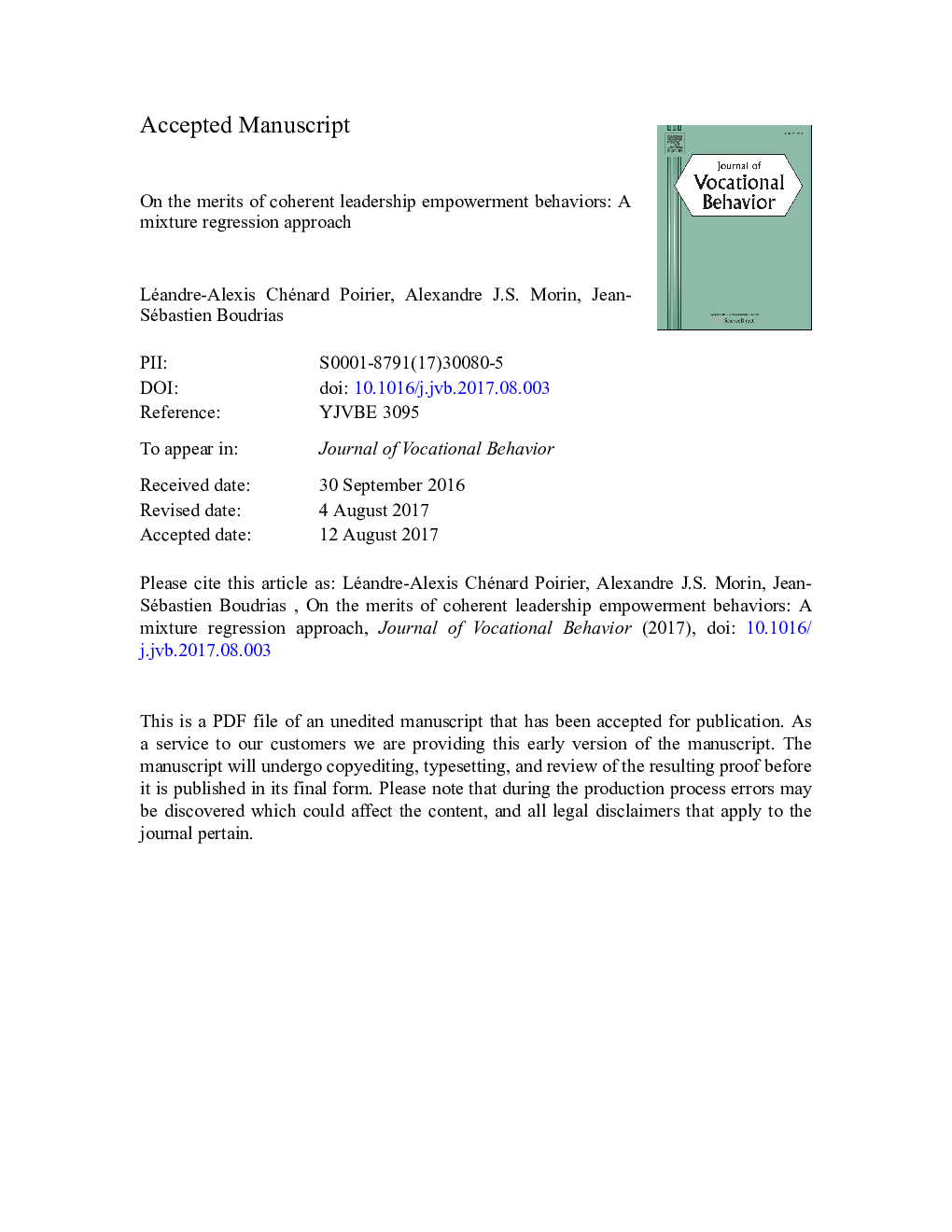| Article ID | Journal | Published Year | Pages | File Type |
|---|---|---|---|---|
| 5035088 | Journal of Vocational Behavior | 2017 | 28 Pages |
Abstract
This study aims to verify Lawler's (1992, 2008) theoretical proposition that the complementariness and coherence of leadership empowerment practices (LEB) need to be jointly considered in order to adequately understand their relation with employees' levels of behavioral empowerment. Patterns of relations among three LEB (Delegation, Coaching, and Recognition), and five indicators of behavioral empowerment were analyzed among a sample of 474 Canadian employees. Lawler's proposition was tested using a person-centered mixture regression approach. The results revealed four distinct profiles of employees. At the profile level, results reveal that the joint implementation of a similar level of LEB in a complementary manner relates to employees' levels of behavioral empowerment. However, within each profile, a lack of coherence in the levels of implementation of the three LEB resulted in a more complex pattern of associations with employees' levels of behavioral empowerment. Taken together, these results offer practical guidance to guide supervisors in their utilization of LEB.
Keywords
Related Topics
Social Sciences and Humanities
Business, Management and Accounting
Marketing
Authors
Léandre-Alexis Chénard Poirier, Alexandre J.S. Morin, Jean-Sébastien Boudrias,
